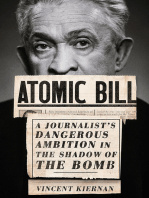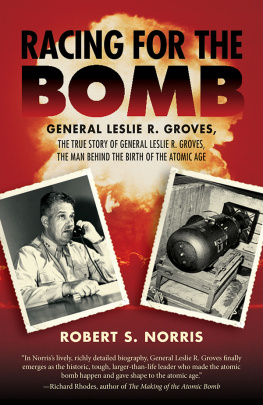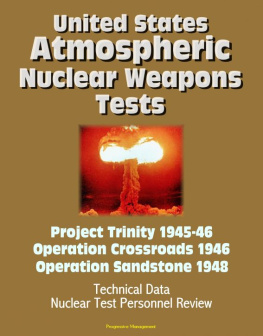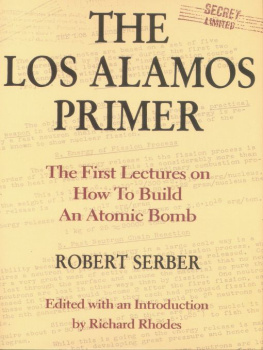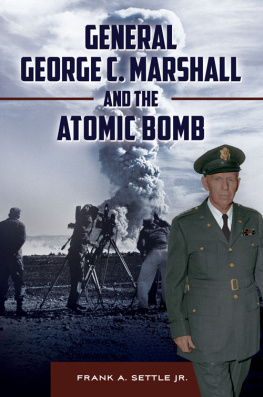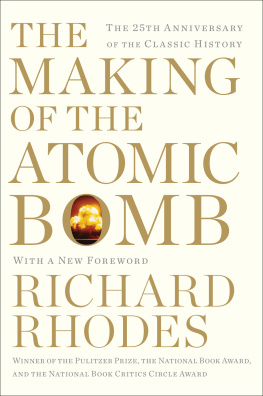This edition is published by ESCHENBURG PRESS www.pp-publishing.com
To join our mailing list for new titles or for issues with our books eschenburgpress@gmail.com
Or on Facebook
Text originally published in 1951 under the same title.
Eschenburg Press 2017, all rights reserved. No part of this publication may be reproduced, stored in a retrieval system or transmitted by any means, electrical, mechanical or otherwise without the written permission of the copyright holder.
Publishers Note
Although in most cases we have retained the Authors original spelling and grammar to authentically reproduce the work of the Author and the original intent of such material, some additional notes and clarifications have been added for the modern readers benefit.
We have also made every effort to include all maps and illustrations of the original edition the limitations of formatting do not allow of including larger maps, we will upload as many of these maps as possible.
THE HELL BOMB
BY
WILLIAM L. LAURENCE
TABLE OF CONTENTS
Contents
TABLE OF CONTENTS
FOREWORD
THE material in this book falls into two categories: (1) a popular version in terms understandable to the layman of technical data published in scientific literature in this country and abroad, and widely known among scientists everywhere; and (2) technical conclusions reached by deduction based on these published facts and theory, for which I assume the sole responsibility. In doing so, I wish to make it emphatically clear that I have had no access to any classified information on the current hydrogen-bomb program, and also that whatever access I had to H-bomb information during my stay at Los Alamos in the spring and summer of 1945 was strictly limited to the somewhat vague and general discussions carried on there in 1945 and earlier.
I hereby take the opportunity to express my profound appreciation to Dr. James G. Beckerley, Director of Classification, Atomic Energy Commission, Washington, D.C., and to Mr. Corbin Allardice, Director, Public Information Service, of the AECs New York Operations Office, for their generous co-operation in clearing this manuscript for publication. It must be strictly understood that any such clearance merely means that the AEC has no objection to publication on the grounds of security. It does not in any way vouch for the accuracy or correctness of the books contents.
WILLIAM L. LAURENCE
New York City
July 30, 1950
INTRODUCTION
Democracy Depends on an Informed Electorate
It is most important in our democracy that our government be frank and open with the citizens. In a democracy it is only possible to have good government when the citizens are well informed. It is difficult enough for them to become well informed when the information is easily available. When that information is not available, it is impossible. While there may be some cases in which the information which the citizen needs, in order to make an intelligent judgment of national policy, must be kept secret, so that military potential will not be jeopardized, the present use of secrecy far exceeds this minimum limit. These are the methods of an authoritarian government and should be vigorously opposed in our democracy....
The citizen must choose insofar as that is possible. Today, if he tries to come to some conclusion about what should be done to increase the national security, the citizen runs up against a high wall of secrecy. He can, of course, take the easy solution and say that these are questions which should be left to the upper echelons of the military establishment to decide. But these questions are so important today, that to leave them to the military men to decide is for the citizen essentially to abrogate his basic responsibility. If, in time of peace, questions on which the future of our country depends are left to any small group, not representative of the people, to decide, we have gone a long way toward authoritarian government.
The United States has grown to be a strong nation under a constitution which wisely has laid great emphasis upon the importance of free and open discussion. Urged by a large number of people who have fallen for the fallacy that in secrecy there is security, and, I regret, encouraged by many, including eminent scientists, to prophesy doom just around the corner, we are dangerously close to abandoning those principles of free speech and open discussion which have made our country great. The democratic system depends on making intelligent decisions by the electorate. Our democratic heritage can only be carried on if the citizen has the information with which to make an intelligent decision.
(From a talk on the hydrogen bomb, March 27, 1950, at Town Hall, Los Angeles, by Professor Robert F. Bacher, head of the Physics Department, California Institute of Technology. Professor Bacher served as the first scientific member of the Atomic Energy Commission and was one of the major architects of the atomic bomb at Los Alamos, New Mexico.)
ITHE TRUTH ABOUT THE HYDROGEN BOMB
I FIRST heard about the hydrogen bomb in the spring of 1945 in Los Alamos, New Mexico, where our scientists were putting the finishing touches on the model-T uranium, or plutonium, fission bomb. I learned to my astonishment that, in addition to this work, they were already considering preliminary designs for a hydrogen-fusion bomb, which in their lighter moments they called the Super-duper or just the Super.
I can still remember my shock and incredulity when I first heard about it from one of the scientists assigned to me by Dr. J. Robert Oppenheimer as guides in the Dantesque world that was Los Alamos, where the very atmosphere gave one the sense of being in the presence of the supernatural. It seemed so fantastic to talk of a superatomic bomb even before the uranium, or the plutonium, bomb had been completed and testedin fact, even before anybody knew that it would work at allthat I was inclined at first to disbelieve it. Could anything be more powerful, I found myself thinking, than a weapon that, on paper at least, promised to release an explosive force of 20,000 tons of TNT? It was a screwball world, this world of Los Alamos, I kept saying to myself, and this was just a screwball notion of my younger scientific mentors.
So at the first opportunity I put the question toProfessor Hans A. Bethe, of Cornell University, one of the worlds top atomic scientists, who headed the elite circle of theoretical physicists at Los Alamos. Dr. Bethe, I knew, was the outstanding authority in the world qualified to talk about the subject, since he was the very man who first succeeded in explaining how the fusion of hydrogen in the sun is the source of energy that will make it possible for life to continue on earth for billions of years.
Is it true about the superbomb? I asked him. Will it really be as much as fifty times as powerful as the uranium or plutonium bomb?
I shall never forget the impact on me of his quiet answer as he looked away toward the Sangre de Cristo (Blood of Christ) mountain range, their peaks turning blood-red in the New Mexico twilight. Yes, he said, it could be made to equal a million tons of TNT. Then, after a pause: Even more than a million.


